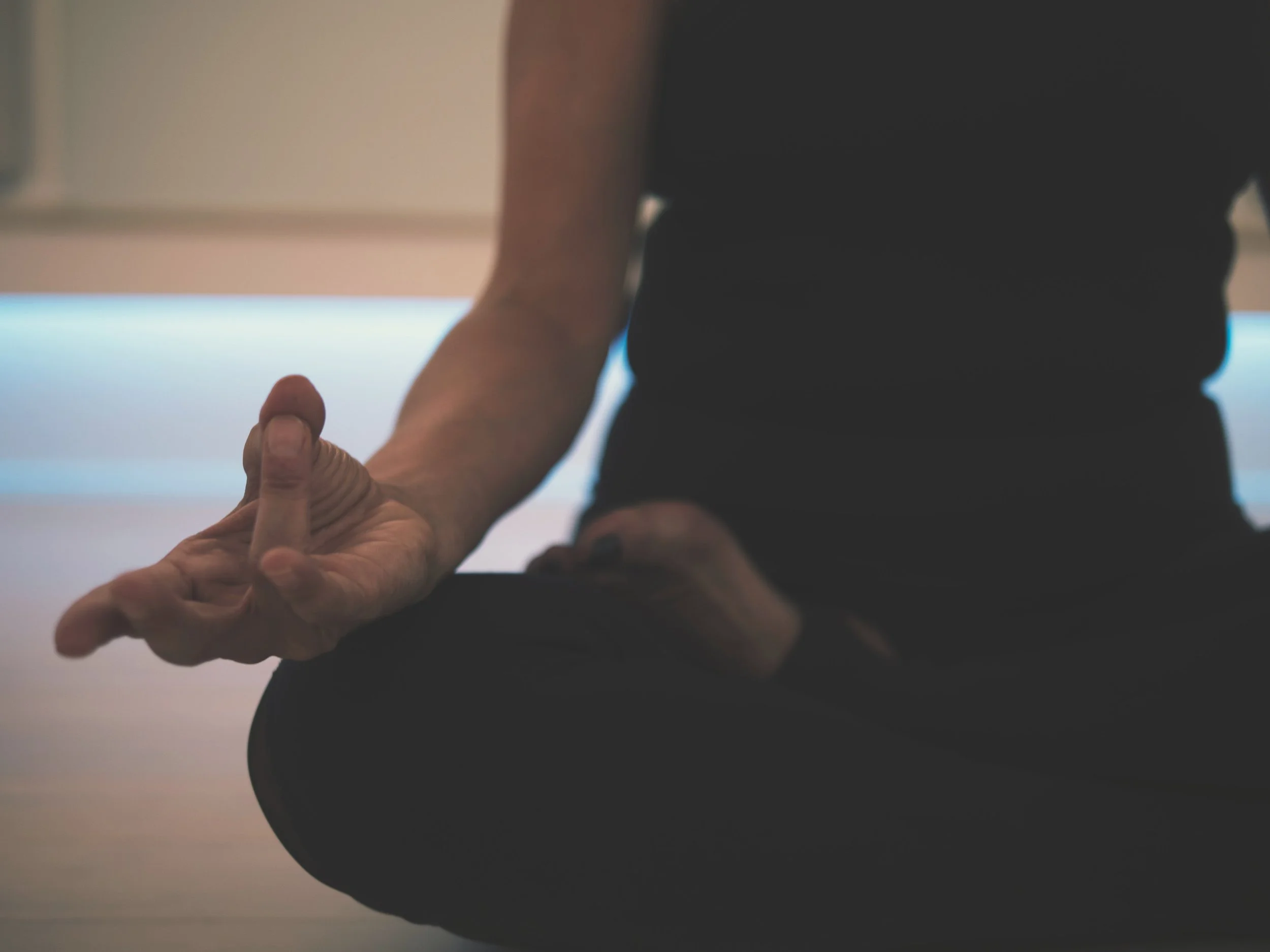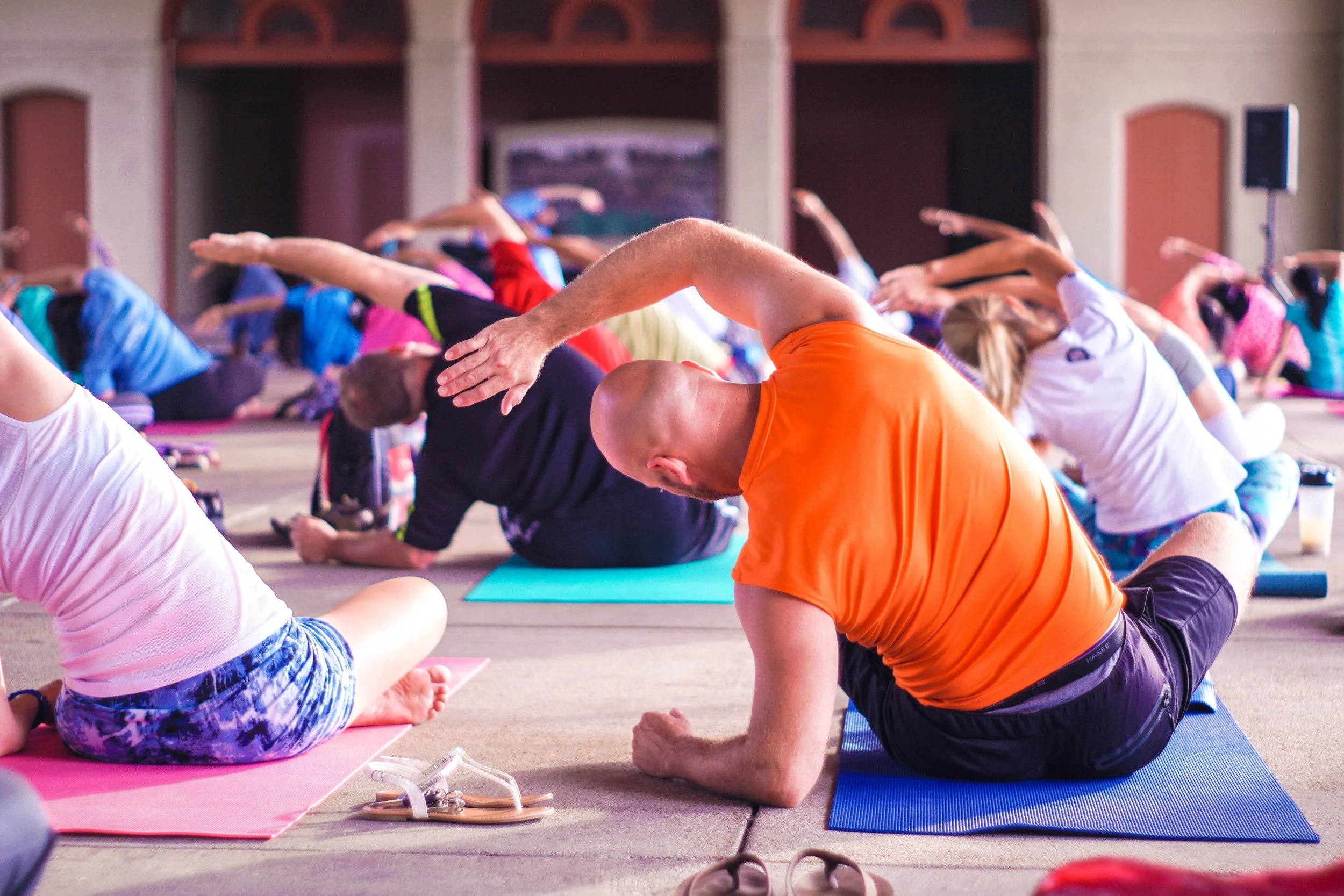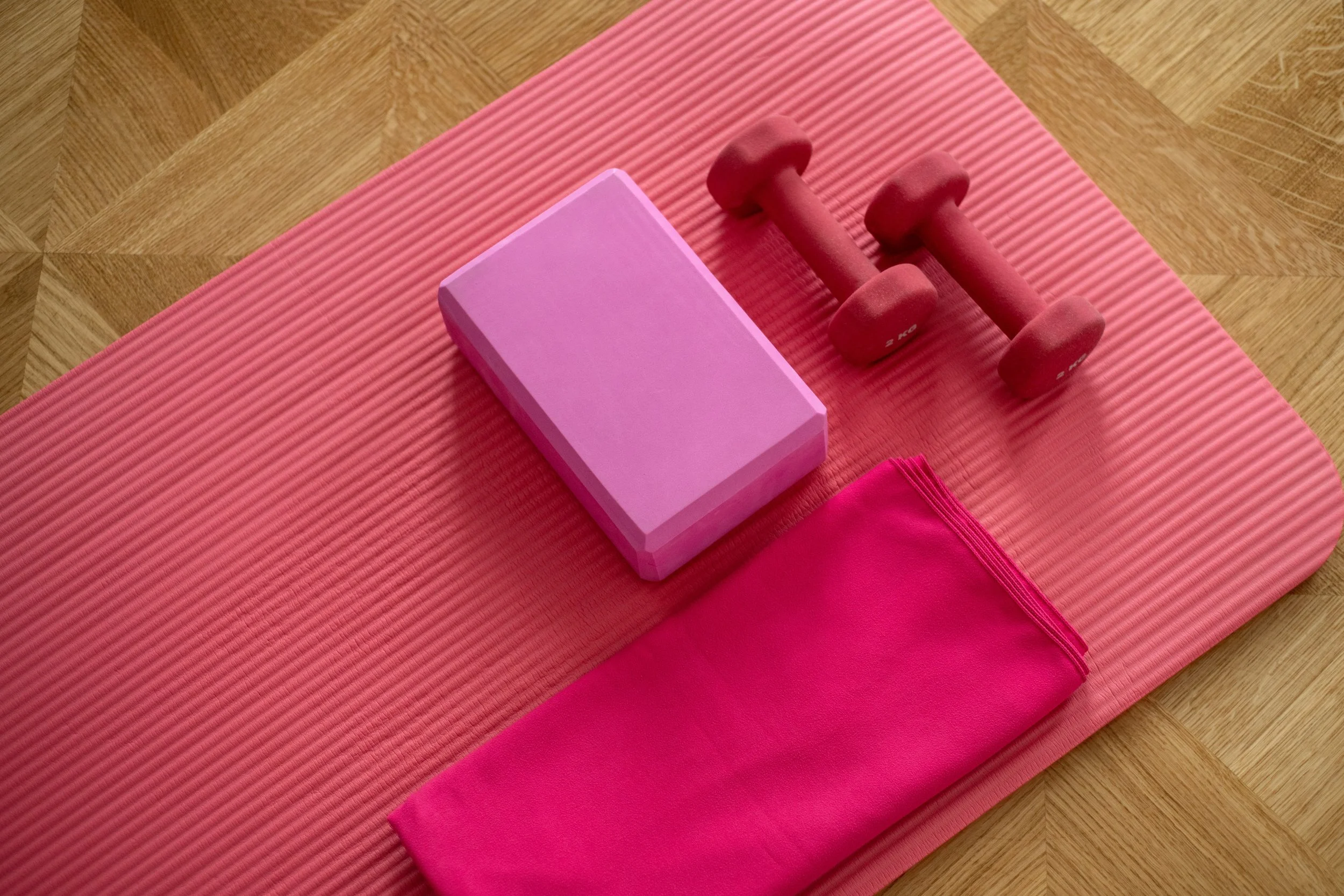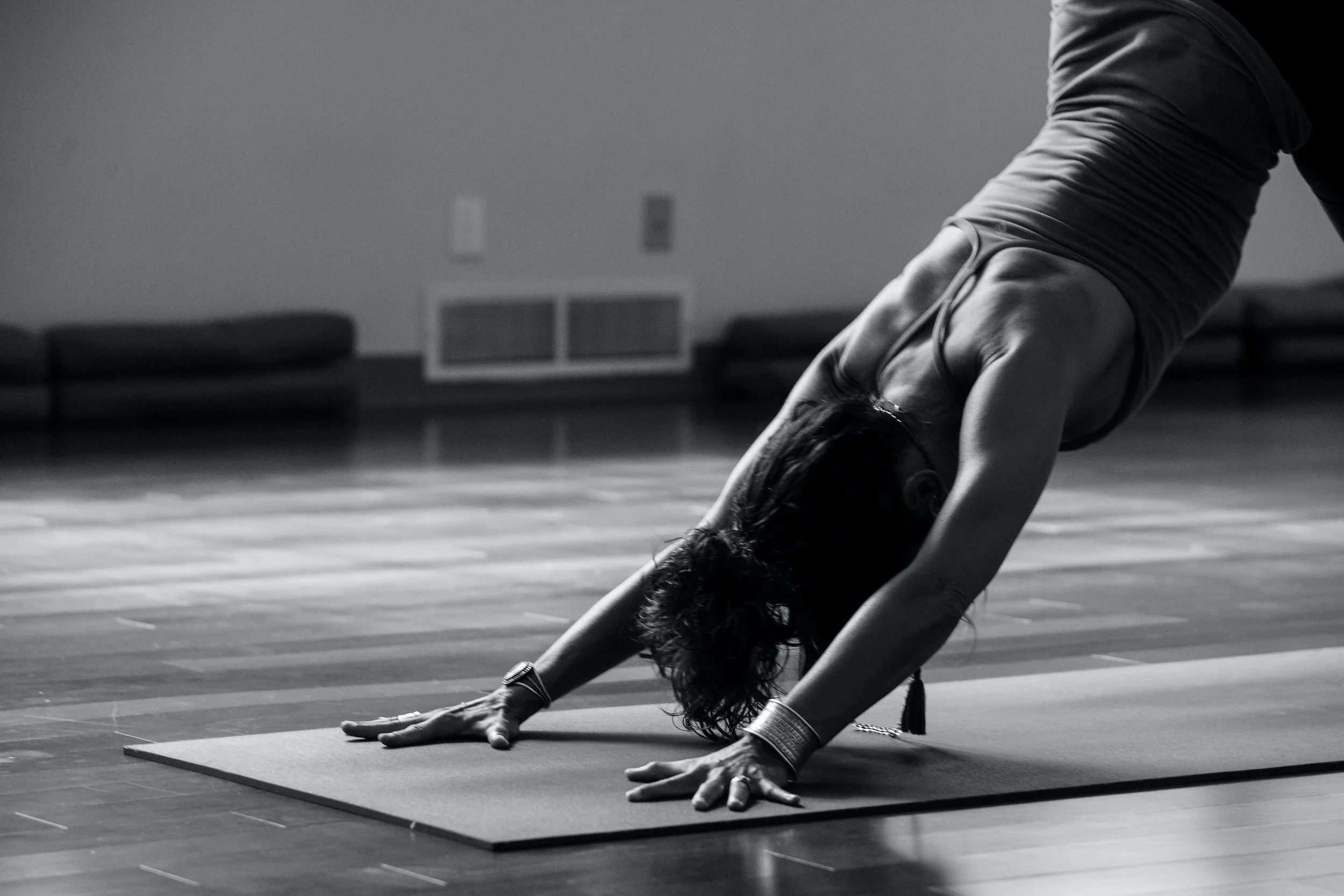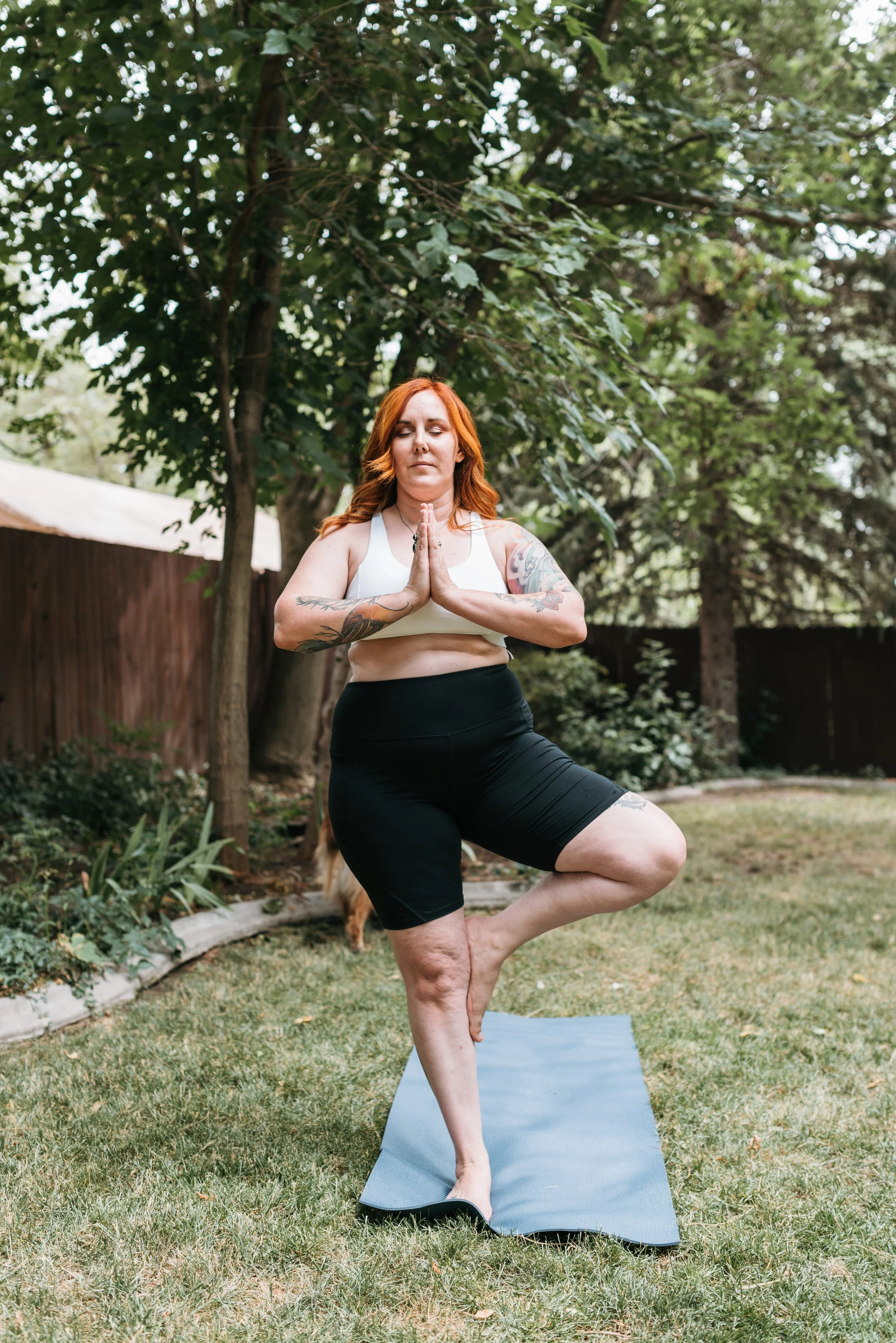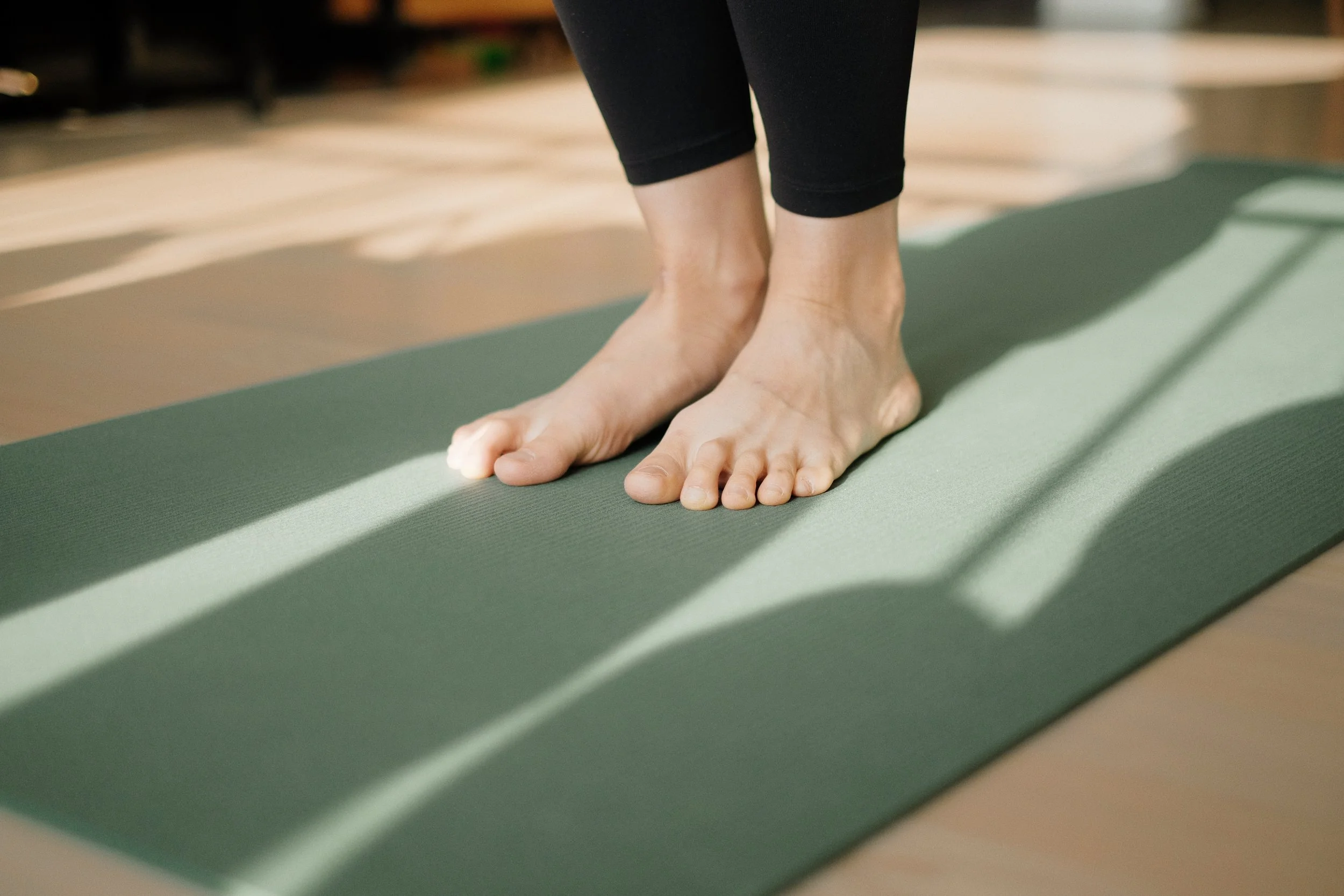Yoga
Yoga is a powerful tool for healing, growth, and self-awareness. Whether you are looking to improve your physical health, reduce stress and anxiety, or cultivate a deeper sense of inner peace and contentment, yoga can be an effective and accessible practice.
Choosing to embrace the transformative power of yoga is a profound step towards enhanced well-being in your mind, body, and spirit.
With the Healers & Teachers app, you gain access to a wealth of resources, experienced practitioners, and a supportive community
What is Yoga? How does it work?
Yoga is an ancient practice that has been used for thousands of years to promote physical, mental, and spiritual well-being. Yoga works by combining physical movement, breath control, and mindfulness to promote overall health and well-being. Here's a more detailed explanation of how yoga works:
Physical Movement:
Yoga involves a series of physical postures or "asanas" that are designed to promote strength, flexibility, balance, and cardiovascular health. These postures can be gentle or more vigorous, depending on the style of yoga practiced and the individual's fitness level.Through regular practice of these postures, the body becomes stronger, more flexible, and more resilient, which can help to prevent injury and promote overall physical health.
Breath Control:
Breath control, or "pranayama," is a key aspect of yoga practice. By learning to control the breath, yogis can calm the nervous system, reduce stress, and improve overall health and well-being.In yoga, there are many different types of breath control techniques that are used to promote relaxation, energize the body, or balance the nervous system. By incorporating these techniques into their practice, yogis can improve their physical and mental health.
Mindfulness:
Mindfulness, or the practice of being present in the moment, is another key aspect of yoga practice. By focusing the mind on the present moment, yogis can reduce stress and anxiety, improve mental clarity and focus, and cultivate a deeper sense of inner peace and contentment.Through the practice of mindfulness, yogis learn to observe their thoughts and emotions without judgment, which can help them to develop greater self-awareness and emotional resilience.
The combination of physical movement, breath control, and mindfulness in yoga practice works together to promote overall health and well-being, from the physical body to the mind and spirit.
Benefits to modern day lives
Yoga has many benefits and applications in modern life, from improving physical health to reducing stress and anxiety, and promoting emotional and spiritual well-being. Here are some of the main benefits and applications of yoga:
Physical Health Benefits:
Yoga has been shown to have many physical health benefits, including:
Improved flexibility, strength, and balance
Increased cardiovascular health
Reduced pain, including chronic pain
Improved respiratory function
Lowered blood pressure
Reduced inflammation
Improved sleep quality
These physical health benefits make yoga an effective tool for preventing and managing a wide range of health issues, from heart disease and chronic pain to insomnia and anxiety.
Mental Health Benefits:
Yoga has also been shown to have many mental health benefits, including:
Reduced stress and anxiety
Improved mood
Reduced symptoms of depression
Increased mindfulness and self-awareness
Improved cognitive function and memory
These mental health benefits make yoga an effective tool for managing stress and anxiety, improving mood, and promoting overall mental well-being.
Spiritual Benefits:
Yoga has a long history of being used as a spiritual practice, and it has been shown to have many benefits for spiritual wellness, including:
Increased spiritual mindfulness and awareness
Improved sense of purpose and meaning in life
Cultivation of compassion and empathy
Improved connection to self and others
Greater sense of inner peace and contentment
These spiritual benefits make yoga an effective tool for promoting spiritual growth and well-being, regardless of religious or spiritual beliefs.
The science of yoga
Yoga has been the subject of scientific research in a number of different fields, including anatomy, physiology, psychology, and neuroscience. Here are some of the ways in which yoga has been shown to work in these areas:
Anatomy: Yoga involves a series of physical postures, or asanas, that are designed to improve strength, flexibility, and balance. Practicing yoga regularly can help to improve posture, reduce muscle tension and pain, and improve overall physical health.
Physiology: Yoga has been shown to have a number of physiological benefits, including reducing inflammation, improving cardiovascular health, and boosting the immune system. Yoga has also been shown to reduce the levels of the stress hormone cortisol in the body, which can help to reduce the negative effects of chronic stress on the body.
Psychology: Yoga has been shown to be an effective tool for reducing symptoms of anxiety and depression, improving mood, and promoting emotional regulation. Yoga can also help to improve cognitive function and memory, and may be an effective tool for managing symptoms of ADHD.
Neuroscience: Yoga has been shown to have an impact on the brain and nervous system, improving neural connectivity and reducing the effects of aging on the brain. Yoga has also been shown to increase levels of GABA, a neurotransmitter associated with reduced anxiety and improved mood.
What are the different types of yoga practices?
There are many different types of yoga practices, each with its own focus and approach. Each type of yoga practice has its own unique benefits when it comes to healing and growth. Here's a closer look at the unique benefits of each type of yoga:
Hatha Yoga: Hatha yoga is a gentle and accessible practice that is suitable for beginners and experienced practitioners alike. It typically involves a series of physical postures or "asanas," along with breath control and meditation.
Vinyasa Yoga: Vinyasa yoga is a type of yoga that is characterized by flowing sequences of movements that are synchronized with the breath. This is a more vigorous and flowing practice that can be challenging, but also energizing and uplifting. This practice is particularly effective for improving cardiovascular health and increasing strength and flexibility.
Ashtanga Yoga: Ashtanga yoga is a more traditional and intense practice that involves a set sequence of postures. This practice is particularly effective for developing strength and endurance, as well as improving overall physical and mental health.
Iyengar Yoga: Iyengar yoga is a precise and alignment-focused practice that is particularly effective for improving posture and alignment, reducing pain and tension, and increasing flexibility. It typically involves the use of props, such as blocks, straps, and blankets, to help students achieve proper alignment and form.
Kundalini Yoga: Kundalini yoga is a unique and dynamic practice that focuses on awakening the energy of the body. This practice typically involves a combination of physical postures, breath control, and meditation, and is often practiced with chanting and music. This practice is particularly effective for reducing stress and anxiety, promoting mental clarity and focus, and increasing spiritual awareness.
Restorative Yoga: Restorative yoga is a gentle and relaxing practice that is particularly effective for reducing stress and promoting relaxation and rejuvenation. This practice typically involves a series of gentle postures that are held for an extended period of time, along with breath control and meditation. This practice is also effective for reducing chronic pain and tension, as well as improving sleep quality.
Yin Yoga: Yin yoga is a slow and meditative practice that focuses on stretching and relaxing the body's connective tissues. This practice typically involves holding postures for an extended period of time, often several minutes at a time. This practice is particularly effective for reducing tension and promoting relaxation, as well as improving flexibility and mobility.
Hot Yoga: Hot yoga is a challenging and invigorating practice that is practiced in a heated room. This practice is particularly effective for improving cardiovascular health and increasing endurance and stamina, as well as promoting detoxification and weight loss.
How does one begin with a yoga practice?
Starting a yoga practice can be a great way to improve physical, mental, and spiritual health. Starting a yoga practice can be a rewarding and transformative experience. By following these steps and staying committed to your practice, you can improve your physical, mental, and spiritual health and well-being. Here are some steps to get started with a yoga practice:
Determine your goals: Before starting a yoga practice, it's important to determine your goals. Are you looking to improve your physical health, reduce stress and anxiety, or cultivate a deeper sense of spiritual well-being? Knowing your goals can help you choose a type of yoga practice that is best suited to your needs.
Find a qualified instructor: It's important to find a qualified yoga instructor who can guide you through the practice and ensure that you are practicing safely and effectively. Look for an instructor who has completed a yoga teacher training program and is registered with a yoga alliance.
Choose a type of yoga: There are many different types of yoga practices to choose from, each with its own focus and approach. Research the different types of yoga practices and choose one that aligns with your goals and interests.
Start with beginner classes: If you are new to yoga, it's important to start with beginner classes. Beginner classes will help you to learn the basic postures and alignment, as well as proper breathing techniques.
Practice regularly: Consistency is key when it comes to starting a yoga practice. Aim to practice at least once a week, and gradually increase your practice time as you become more comfortable with the postures and techniques.
Listen to your body: It's important to listen to your body and practice at a pace that is comfortable for you. Don't push yourself too hard, and take breaks when you need to.
Practice at home: In addition to attending classes, it can be helpful to practice yoga at home. This can help you to develop a deeper understanding of the postures and techniques, and to build a consistent practice.
Who might want to try yoga? Are there any risks?
Yoga is a low-impact form of exercise that can be practiced by people of all ages and fitness levels. It's a great practice for anyone looking to improve their physical health, reduce stress and anxiety, or cultivate a deeper sense of spiritual well-being. Here are some groups of people who might benefit from trying yoga:
Beginners: Yoga is a great practice for beginners who are looking to improve their physical health and well-being. Many yoga classes are geared towards beginners, and instructors can help you to learn the basic postures and techniques.
Athletes: Yoga can be a great supplement to athletic training, helping to improve flexibility, balance, and mental focus. Many athletes use yoga as part of their training regimen.
Older adults: Yoga is a low-impact form of exercise that is gentle on the joints, making it a great practice for older adults who may have mobility issues or arthritis.
Pregnant women: Prenatal yoga can be a great way for pregnant women to stay active and reduce stress during pregnancy. Many yoga studios offer prenatal classes that are tailored to the needs of pregnant women.
While yoga is generally considered a safe form of exercise, there are some risks associated with the practice. Here are some things to keep in mind:
Injury: As with any form of exercise, there is a risk of injury with yoga. It's important to practice at a pace that is comfortable for you and to listen to your body.
Overexertion: It's important not to push yourself too hard in yoga, especially if you are new to the practice. Overexertion can lead to injury and burnout.
Pre-existing medical conditions: If you have a pre-existing medical condition, it's important to talk to your doctor before starting a yoga practice. Certain postures may not be appropriate for people with certain medical conditions.
In summary, yoga is a great practice for people of all ages and fitness levels. While there are some risks associated with the practice, these can be minimized by practicing at a pace that is comfortable for you and listening to your body.
Healing and Growth begins with you
Embarking on your yoga journey is a deeply enriching and empowering choice. The Healers & Teachers app ensures you have comprehensive resources and a nurturing community at your fingertips, ready to support you every step of the way.
The Healers & Teachers app provides:
Expert yoga instructors: Connect with experienced yoga instructors who specialize in various yoga styles and practices. Receive personalized guidance and tailored approaches to improve flexibility, strength, and mindfulness.
Comprehensive practices and programs: Explore a diverse range of yoga practices, including Hatha, Vinyasa, and Kundalini. Discover programs for stress reduction, relaxation, and spiritual growth. Access guided sessions for different experience levels and specific goals.
Thriving community: Engage with a vibrant community of yoga enthusiasts on a shared wellness journey. Connect, share experiences, seek advice, and learn from the collective wisdom and support of fellow yogis.






